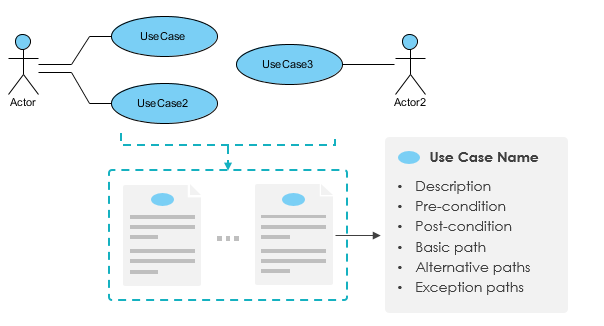Summary?
Use Cases, introduced by Ivar Jacobson more than 20 years ago, are used to capture user (actor) point of view while describing functional requirements of the system. They describe the step by step process a user goes through to complete that goal using a software system.
Simple Use Case Diagram A Use Case is a description of all the ways an end-user wants to “use” a system. Use Cases capture all the possible ways the user and system can interact that result in the user achieving the goal. They also capture all the things that can go wrong along the way that prevent the user from achieving the goal.

Detailed Use Case Specification
A Use Case Specification is a textual description of the functionality provided by the system. It captures actor-system interaction. That is, it specifies how a user interacts with a system and how the system responds to the user actions. It is often phrased in the form of a dialog between the actor and the system. The Use Case Specification is represented in the Use Case Diagram by an oval, and is what most people think of when they hear the term Use Case.

Why We Still Need Use Cases?
Alistair Cockburn explains that he sees (with companies he consults to) three main problems with User Stories:
Lack of context (what’s the largest goal) Sense of completeness that you covered all bases relating to a goal. No mechanism for looking ahead at upcoming work.
Differece between Use Cases and User Stories
ref: link